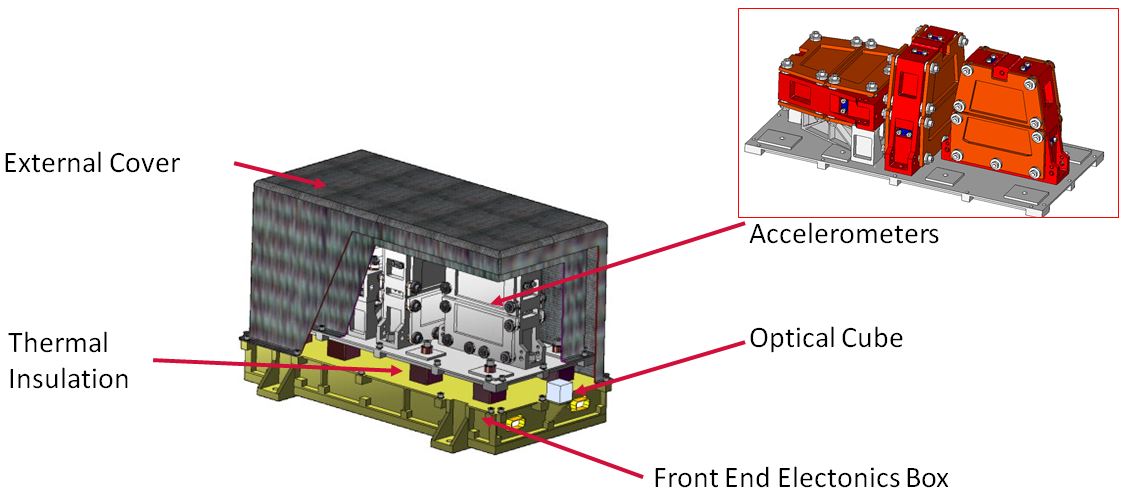ISA - BepiColombo
ISA
italian spring accelerometer

science goals
ISA is a three-axis high sensitivity accelerometer on board the MPO. It will support the study of the planet Mercury and also the test of Einstein's theory of General Relativity (GR) to an unprecedented level of accuracy. To perform such measurements it is necessary to combine data from four different instruments located on the MPO: star tracker, high resolution camera, accelerometer and transponder. The accelerometer will measure all inertial accelerations caused by the incoming solar visible radiation and by the planet albedo acting on the MPO structure, in order to transform it, a–posteriori, into a drag–free satellite.
The scientific objectives of ISA are strongly related to the Radio Science Experiment MORE. Together these experiments can provide information on Mercury's interior structure as well as test Einstein's theory of General Relativity. The radio science investigation of BepiColombo comprises a complex set of measurements and scientific objectives. Three categories of experiments can be distinguished: a gravimetry experiment, a rotation experiment, and a relativity experiment. The scientific goals are:
- study the global gravity field of Mercury and its time variations due to solar tides in order to constrain the internal structure of the planet.
- observe the local gravity anomalies in order to constrain the mantle structure of the planet and the interface between mantle and crust.
- measure the rotation state of Mercury in order to constrain the size and the physical state of the core of the planet.
- study the motion of Mercury centre of mass in order to improve the determination of the parameterised post– newtonian (PPN) parameters of GR.
measurement principle
The measurements necessary to achieve the indicated scientific objectives are based on:
- range and range–rate derivations of the MPO position with respect to Earth–bound radar station(s) and also of Mercury centre–of–mass around the Sun;
- the determination of the non–gravitational signals on the MPO by means of an on–board accelerometer;
- the determination of the MPO absolute attitude by means of a star–tracker;
- the determination of angular displacements of reference points on the solid surface of the planet;
The accelerometer is particularly important for the last two experiments.
ISA's key role is to remove the non–gravitational perturbations from the list of unknowns, i.e., the strong non–conservative accelerations on the MPO produced by the Sun (visible radiation) and by Mercury (infrared radiation).
The accelerometer works at frequencies lower than the resonance frequency of the mechanical oscillator. The displacements of a proof–mass as a result of perturbing accelerations are detected by means of capacitive transducers in a bridge configuration, followed by a low noise amplifier.
This investigation is essential for an accurate orbit determination of the MPO around Mercury and, as a consequence, of the Mercury centre–of–mass determination around the Sun.
LINK TO SCIENCE DATASETS - COMING SOON
LINK TO USER MANUAL
- Removed a total of (1) style text-align:center;








































 Sign in
Sign in
 Science & Technology
Science & Technology
